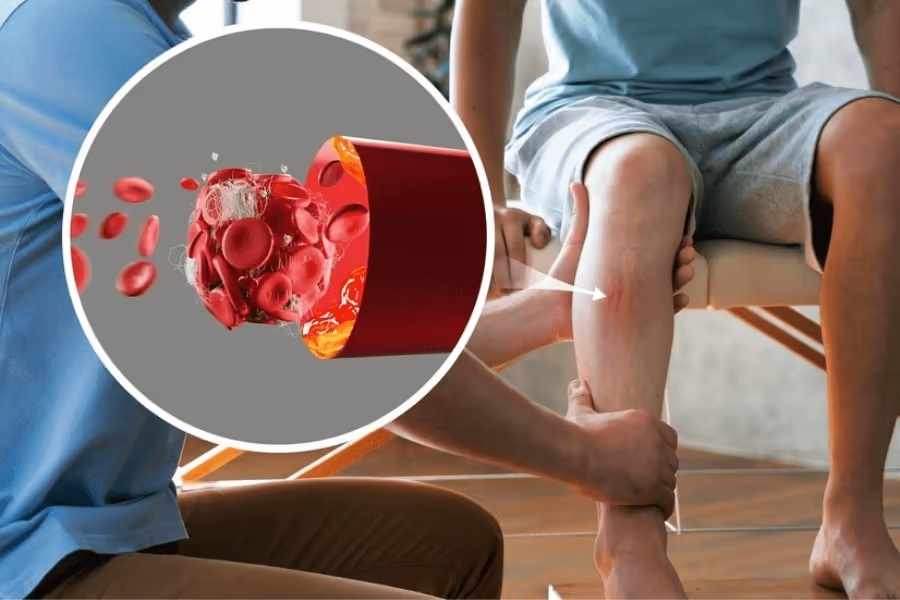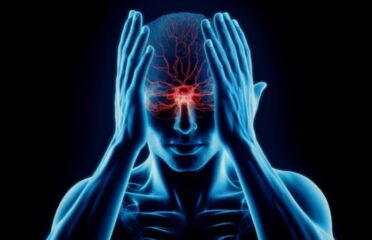Arteriovenous Malformation (AVM)
AVM Overview

Arteriovenous malformation (AVM) is a rare medical condition where arteries and veins form an abnormal tangle, disrupting the normal blood flow and connections in the body.
It is commonly found in the brain and spinal cord. In AVMs, the blood flow bypasses oxygen to the surrounding tissue due to the absence of tiny blood vessels called capillaries.
This can lead to tissue damage and nerve cell death.
Furthermore, over time, some AVMs can grow larger as blood flow increases, making the condition more severe. The presence of AVMs in the body requires immediate medical attention, and early detection can improve the chances of successful treatment.
Symptoms
• Brain arteriovenous malformation (AVM) can remain asymptomatic until a rupture occurs, leading to bleeding.
• Bleeding serves as the initial sign in approximately 50% of brain AVM cases.
• Some individuals may experience signs and symptoms unrelated to bleeding, such as seizures.
• Headaches or localized head pain may occur due to increased pressure or vascular changes.
• Seizures are common manifestations of brain AVM and can vary in severity.
• Muscle weakness or numbness in specific body parts may be experienced, depending on the location and size of the malformation.
Causes & Risks
• Risk factors for brain AVM include male gender and a family history of the condition.
• Hereditary hemorrhagic telangiectasia (HHT) may increase the risk, although the genetic connections remain unclear.
• The cause of brain AVM is unknown; it can either be present at birth (congenital) or develop later in life.
• HHT, including conditions like Osler-Weber-Rendu syndrome, is associated with the development of brain AVM.
• Ordinarily, oxygen-rich blood flows from the heart to the brain through arteries, slowing down in capillaries.
• However, AVMs disrupt this process, causing direct and rapid blood flow from arteries to veins, bypassing the gradual oxygen exchange seen in a normal vascular network.
Test & Diagnosis
• Neurological Examination: A comprehensive assessment of symptoms and potential signs of complications, such as headaches, seizures, and neurological deficits.
• MRI (Magnetic Resonance Imaging): Utilizes magnetic fields and radio waves to produce detailed brain images, aiding in AVM detection.
• CT (Computed Tomography) Scan: Combines X-ray images for cross-sectional brain views, identifying bleeding or abnormalities.
• Cerebral Angiography: Injects a contrast dye for precise X-ray imaging of blood flow, offering detailed insights into AVM size, location, and blood flow patterns.
• CT Angiography (CTA): Utilizes CT technology to create detailed images, assisting in visualizing AVMs and blood flow assessment.
• MR Angiography (MRA): Uses MRI technology to produce detailed images, aiding in the visualization of AVMs and assessment of blood flow.
Treatment
• Observation: Small, low-risk AVMs with no symptoms may be regularly monitored through imaging tests without immediate intervention.
• Medication: Prescribed to manage symptoms or reduce AVM-related complications, such as seizure control, headache management, or bleeding risk reduction.
• Embolization: An interventional radiology procedure that uses catheter-guided injection to block blood flow to abnormal vessels, reducing bleeding risk and alleviating symptoms.
• Stereotactic Radiosurgery (SRS): Precise radiation delivery to the AVM induces changes, aiming for closure or size reduction over time.
• Surgical Removal (Resection): Recommended for large, symptomatic, or high-risk AVMs in accessible areas, preserving healthy brain tissue.
• Combination Therapy: Utilizing a mix of treatments, like embolization followed by surgery or a combination of embolization and stereotactic radiosurgery.
Living With
Regular check-ups with your healthcare professionals are essential, whether your arteriovenous malformation (AVM) is asymptomatic or symptomatic.
Monitoring symptoms and adjusting treatment plans are necessary to manage the condition effectively.
Symptomatic cases may require various treatment options, including medication, endovascular treatments, embolization, surgery, lifestyle adjustments, and emotional support. By comprehending your health condition, you can make informed choices about your medical care and way of life.
Make sure to discuss any questions or concerns with your healthcare provider to receive tailored support and guidance.
Complications
• Brain AVM complications encompass bleeding, reduced brain tissue oxygenation, weak blood vessels, and brain damage.
• Annual bleeding risk varies from 2-3%, with hemorrhages potentially unnoticed or life-threatening.
• Blood bypassing capillaries results in oxygen deprivation, manifesting as stroke-like symptoms.
• High pressure on blood vessels may trigger aneurysms.
• Brain AVMs contribute to 2% of all hemorrhagic strokes, predominantly affecting children and young adults.
• Understanding these complications is vital for prompt diagnosis and effective management.

The Content is not intended to be a substitute for professional medical advice, diagnosis, or treatment. Always seek the advice of your physician or other qualified health provider with any questions you may have regarding a medical condition.
Know more about
Our Healthcare Planner
Three fundamental values we can assure you:
1. Personalized Healthcare.
2. Most advanced robotic therapies
3. Transparent pricing





